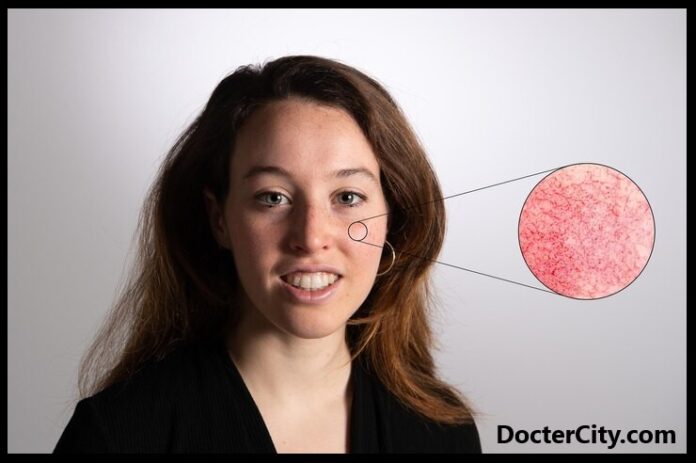Milia (Milialar) – For those of us who cherish the fine art of skincare, encountering a cluster of tiny white bumps on our faces, often mistaken for whiteheads, can be an irritating experience. Known as milia, these minuscule cysts can linger on the skin, proving resistant to the standard extraction methods that we would apply to regular acne. Have you peered into the bathroom mirror, perplexed by these stubborn intruders? Milia, although benign, can detract from the smooth appearance we desire for our skin. But fear not; in this comprehensive guide, tailored for the milialar community, we unmask the causes and pathways to managing this condition effectively.
Let’s embark on a journey that demystifies milia, giving you the knowledge to address it soundly and restore your skin’s natural radiance.
What is Milia?
Milia are the small cysts often observed among infants, earning them the name “milk spots.” However, these little keratin-filled sacs are not confined to the crib, as they can be present in individuals of all ages. They can manifest as solitary cysts or as a cluster resulting from keratin getting trapped beneath the skin’s surface. Milia can appear on various body parts but is most commonly found on the face, specifically around the eyes and cheeks.
The most common type, known as primary milia, develops independently, while secondary milia can result from damage to the skin, such as burns. Neonatal milia can be seen in baby milialars and often disappears without treatment.
These cysts are typically seen in people who have suffered from significant sun damage or have endured rashes. A dermatologist usually diagnoses milia through a simple examination.
Causes of Milia
Hormonal Changes
Hormonal fluctuations, a central protagonist in the theater of skin conditions, can steer the skin to produce excess keratin, sometimes leading to milia. Adolescents undergoing puberty, pregnant individuals, and older adults experiencing hormonal shifts may find a correlation between these changes and the onset of milia.
Skin Trauma
Any form of skin trauma, including blistering, chemical peels, or harsh exfoliation, can prompt the skin to respond by generating milia. The disruption of the skin’s natural barrier can cause the sweat glands to become clogged with the protein keratin, forming milia.
Use of Certain Cosmetics
In select cases, the use of certain cosmetics, hefty skin products, or ones not suited for an individual’s skin type can contribute to the development of milia. Products high in comedogenic ingredients or with poor emollient qualities may be more likely culprits. For instance, under-eye creams heavy in emollients could trigger milia in the delicate area around the eyes.
Sun Damage
Excessive sun exposure without proper protection heightens the risk of skin damage. This includes encouraging the development of milia. Over time, prolonged exposure to the sun’s harmful rays can affect the skin’s elasticity and dead cell shedding processes, a double jeopardy scenario for milia formation.
Genetic Predisposition
In some instances, genetics can also play a role in the propensity for milia. If milia runs in the family, it may point towards a genetic predisposition where the skin produces more keratin, increasing the likelihood of cyst formation.
Types of Milia
Primary Milia
As mentioned earlier, primary milia arises from skin that has not been injured. These can be further subcategorized as:
- Milia en Plaque: These appear as a group of milia on a raised, inflamed skin patch.
- Multiple Eruptive Milia: These manifest as crops of milia on the face, upper arms, and torsos.
Secondary Milia
Secondary milia develop as a response to a previous skin injury or inflammatory disease such as blistering rashes or burns.
Neonatal Milia
The name itself suggests when these appear. Neonatal milia are seen in newborns and usually cleared without intervention within a few weeks.
Treatment Options
Home Remedies
Several home remedies can be adopted for mild cases of milia. These include using exfoliants containing retinol, retinoids, or alpha hydroxy acids (AHAs) to encourage cell turnover. However, caution is advised with these products, especially around the delicate eye area, which can be sensitive. Also:
- Gentle exfoliation: Light, consistent, and regular exfoliation can help remove dead skin cells and prevent further keratin buildup.
- Avoid heavy or comedogenic products: Opt for lightweight, oil-free products to prevent the skin from occluding.
Professional Treatments
Dermatologists have several methods to treat milia, including:
- Cryotherapy: Freezing the cysts off can be very effective.
- Lancing or de-roofing: A minimally invasive procedure where the cyst is lanced and the contents are removed.
- Laser and diathermy therapy: Precision treatments using either a laser or electrical currents to destroy the cysts.
Prevention Tips
The adage, “prevention is better than cure,” couldn’t be more accurate for Mila. To avoid recurrence, consider the following preventive measures:
- Always wear sunscreen: Protecting your skin from the sun is crucial to prevent milia, especially if you’ve previously had them removed.
- Choose non-comedogenic products: Verify that your skincare and makeup products are labeled non-comedogenic, making them less likely to clog your pores.
- Follow a proper skincare routine: Ensure your skincare regimen includes gentle cleansing, exfoliation, and moisturizing with products that suit your skin type.
Conclusion
Milia may be tiny, but the impact on your skin’s appearance can be enormous. Delving into this phenomenon, we’ve illuminated the factors contributing to their emergence and offered a roadmap for treatment and prevention. The milialar community must be informed and engaged in a dialogue with skincare professionals. Recall that what suits one person may not suit another. Personalized care and a meticulous approach are vital to managing and conquering milia.
For the milialar embarking on a journey to clear, smooth skin, the pathway is not merely skin-deep; it’s a composite of lifestyle choices, skincare regimens, and professional expertise. It’s time to take control of your skin’s destiny, one milialar at a time.

